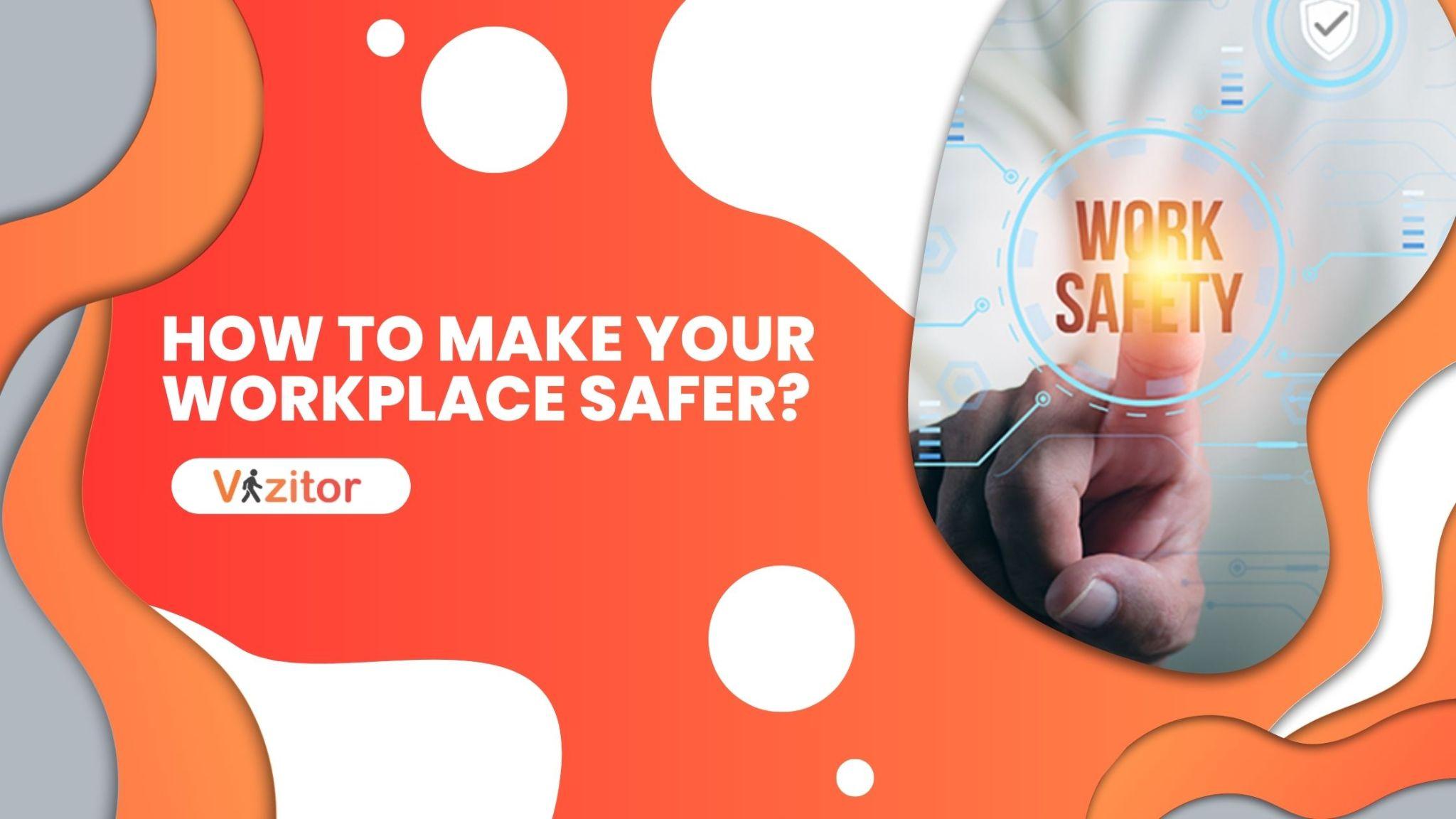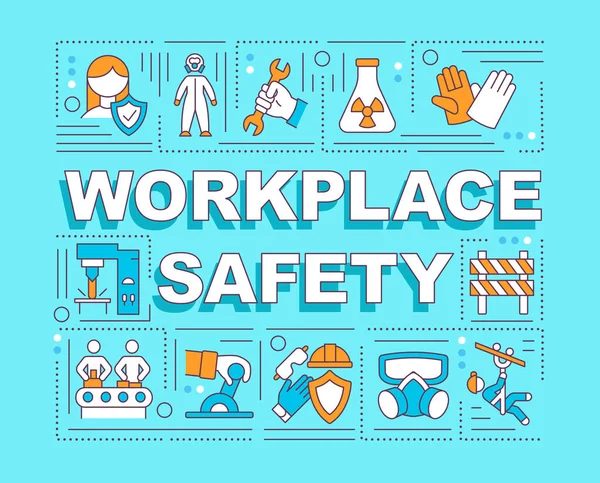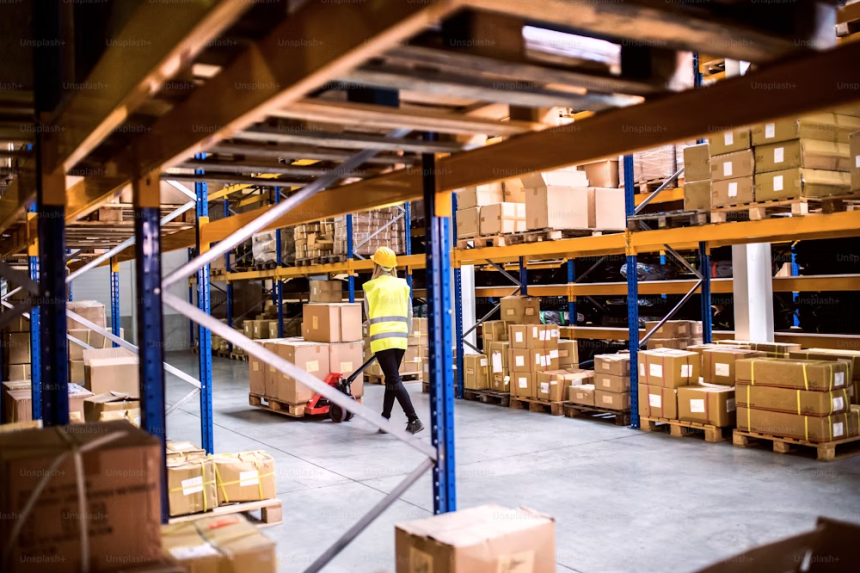Table of Content
Try Vizitor for Free!

Mon, Jun 3, 2024
Read in 7 minutes
Creating a safer workplace has become a paramount concern for companies worldwide, driven by a growing recognition of the profound impact it has on employee well-being, productivity, and overall business success. Recent incidents and regulatory pressures have spurred organizations to reevaluate their safety protocols and invest in comprehensive safety measures.
For instance, after the Deepwater Horizon oil spill in 2010, BP significantly revamped its safety practices to prevent such disasters in the future. Similarly, the COVID-19 pandemic prompted companies like Google and Microsoft to adopt remote work policies and enhance workplace hygiene to protect their employees.
These real-world examples underscore the critical need for proactive safety measures and continuous improvement in ensuring a secure and healthy work environment. Now, let’s delve into the strategies and tools that can effectively enhance workplace safety.
Why Keeping Your Workplace Safer Is Important?
Ensuring workplace safety is not merely a legal requirement; it’s a fundamental aspect of fostering a healthy, productive, and thriving work environment. Companies worldwide are increasingly recognizing the pivotal role of workplace safety in safeguarding employee well-being, enhancing productivity, and protecting their bottom line. From regulatory compliance to moral responsibility, the imperative to keep workplaces safe has never been more crucial.
1. Employee Well-being: A safe workplace significantly contributes to the physical and mental well-being of employees. It reduces the risk of injuries, illnesses, and accidents, fostering a healthier and happier workforce.
2. Productivity and Morale: When employees feel safe at work, they are more productive and motivated. A safe environment boosts morale, encourages engagement, and reduces absenteeism due to work-related injuries or health issues.
3. Legal Compliance: Many industries are subject to stringent safety regulations and standards. Ensuring workplace safety helps companies comply with legal requirements, avoiding penalties, lawsuits, and reputational damage.
4.Cost Savings: Preventing accidents and injuries not only saves lives but also saves money. Companies incur significant costs in terms of medical expenses, workers’ compensation, insurance premiums, and productivity losses due to workplace incidents.
5. Reputation and Brand Image: A commitment to workplace safety reflects positively on a company’s reputation and brand image. It demonstrates care for employees, stakeholders, and the community, enhancing trust and loyalty.
6. Risk Management: Implementing effective safety measures mitigates risks associated with workplace hazards, such as equipment malfunctions, hazardous materials, and ergonomic issues. It safeguards the company’s operations, assets, and continuity.
How To Make Your Workplace Safer?
Making your workplace safer involves implementing a comprehensive approach that addresses various aspects of safety, including physical, psychological, and organizational factors. Here are some strategies to enhance workplace safety:
• Risk Assessment: Conduct regular risk assessments to identify potential hazards in the workplace. This includes assessing physical hazards like machinery, chemicals, and ergonomic risks, as well as psychological hazards like workload, stress, and bullying.
• Safety Policies and Procedures: Develop and communicate clear safety policies and procedures to all employees. Ensure that everyone understands their roles and responsibilities in maintaining a safe work environment.
• Training and Education: Provide ongoing safety training and education for employees at all levels. This includes training on safe work practices, emergency procedures, use of personal protective equipment (PPE), and handling hazardous materials.
• Safety Equipment and Facilities: Equip the workplace with appropriate safety equipment and facilities, such as fire extinguishers, first aid kits, safety signs, ergonomic furniture, and adequate ventilation systems.
• Promote Safety Culture: Foster a culture of safety where employees feel empowered to report hazards, near-misses, and safety concerns without fear of retaliation. Encourage open communication, feedback, and continuous improvement in safety practices.
• Regular Inspections and Maintenance: Conduct regular inspections of equipment, machinery, and facilities to identify and address potential safety hazards. Ensure that preventive maintenance is performed to keep equipment in optimal condition.
• Emergency Preparedness: Develop and regularly review emergency response plans for various scenarios, including fires, medical emergencies, natural disasters, and security incidents. Conduct drills and training exercises to ensure preparedness.
• Health and Wellness Programs: Implement health and wellness programs that promote physical and mental well-being among employees. This can include ergonomic assessments, stress management workshops, fitness programs, and access to counselling services.
• Leadership Commitment: Demonstrate leadership commitment to workplace safety by allocating resources, setting safety goals, and holding everyone accountable for safety performance. Lead by example and prioritize safety in decision-making processes.
Ways To Make Your Workplace Safer
Making your workplace safer often involves leveraging various tools and technologies to enhance safety measures and mitigate risks. Here are some tools that can make your workplace safer:
1. Safety Management Software
Utilize safety management software to streamline safety processes, manage safety data, track incidents, conduct risk assessments, and ensure compliance with safety regulations. This software can centralize safety information, facilitate communication, and enable proactive risk management.
2. Personal Protective Equipment (PPE)
As per the U.S. Department Of Labor, the Occupational Safety and Health Administration is the most important aspect. Provide employees with appropriate PPE such as helmets, gloves, safety glasses, earplugs, and protective clothing based on the specific hazards present in the workplace.
3. Emergency Alert Systems
Implement emergency alert systems, including alarms, sirens, and notifications, to quickly alert employees in case of emergencies such as fires, chemical spills, or severe weather events. Integrate these systems with emergency response plans for swift and coordinated action.
4. Safety Sensors and Monitors
Install safety sensors and monitors to detect hazardous conditions such as gas leaks, temperature extremes, air quality issues, and equipment malfunctions. These sensors can trigger alerts, shut down machinery, or activate safety protocols to prevent accidents.
5. Fire Suppression Systems
Install fire suppression systems such as fire extinguishers, sprinkler systems, and fire alarms to prevent and mitigate fire-related hazards. Ensure regular maintenance, testing, and training on fire safety protocols for employees.
6. Machine Guarding
Implement machine guarding devices such as barriers, shields, and interlocks to protect employees from moving parts, electrical hazards, and other machinery-related risks. Ensure that machines are properly maintained and guarded according to safety standards.
7. Safety Signage and Labels
Use clear and visible safety signage, labels, and markings to indicate hazards, emergency exits, safety procedures, PPE requirements, and restricted areas. Ensure that signage is updated, consistent, and easily understandable for all employees.
8. Safety Training Simulators
Utilize safety training simulators and virtual reality (VR) technology to simulate hazardous scenarios, emergencies, and safety procedures. These tools can enhance training effectiveness, engagement, and retention of safety protocols.
9. Access Control Systems
Implement access control systems, including key cards, biometric readers, and security gates, to control entry to restricted areas, monitor employee access, and prevent unauthorized personnel from accessing hazardous zones.
10. Safety Data Analytics
Utilize safety data analytics tools to analyze and interpret safety data, identify trends, patterns, and potential risks, and make data-driven decisions to improve safety performance. These tools can provide insights into areas for improvement and proactive risk mitigation strategies.
How Can We Boost Workplace Security with a Visitor Management System?
Are you still using a paper logbook to register the visitors, the first step to a secure workspace is to eliminate this system! This is the time to say goodbye to the manual system and move to a digital system. If you’ve already moved with a visitor management system, make sure it supports security requirements.
• Visitor Data Privacy: Paper logbooks are inefficient and expose sensitive data of the visitors. With the visitor management system, it’s better to understand who is entering the workplace and store the data safely.
• Track Visitors: Vizitor uses a digital VMS that can access a detailed view of all recorded individuals. It captures personal details entered by each individual coming through the doors.
Enable Identification With E-badges: The visitor management system takes photos and details of the visitors for visual identification. Then automatically print visitor badges at check-in to ensure visitors are authorized.
• Send Alerts: Sends automatic notifications when an unwanted visitor checks in. Protect Yourself With NDAs: Capture a visitor’s agreement on NDAs, waivers or other legal documents as part of the sign-in process.
• Improve Your Emergency: In case of emergency, instantly access the cloud-based VMS from any browser and send alerts for evacuation to the staff.













